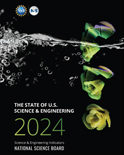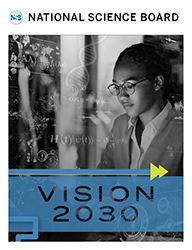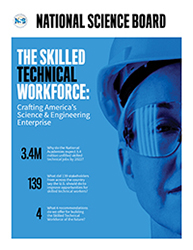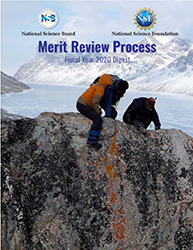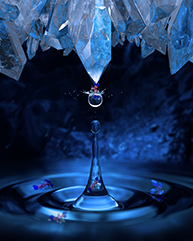News Release 06-068
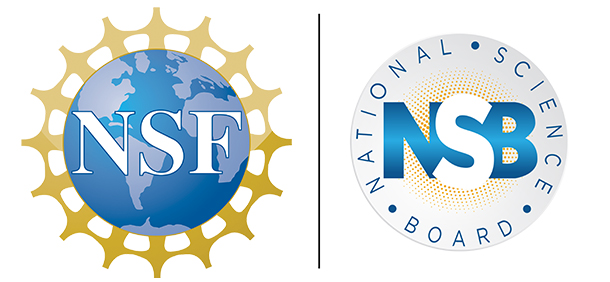
Caltech's Emmanuel Candes to Receive $500,000 Waterman Award
Work in math and computer science promises to improve signal processing
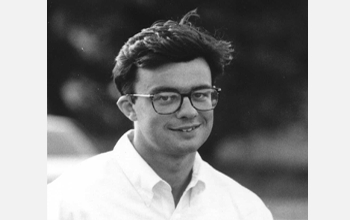
Caltech's Emmanuel Candes has been selected to receive the Alan T. Waterman award. (Credit and Larger Version)
April 17, 2006
Emmanuel Candes, a mathematician at the California Institute of Technology, has been selected to receive the National Science Board's prestigious Alan T. Waterman Award. The board cited Candes' development of new mathematical tools that allow efficient digital representation of wave signals, together with his discovery of new methods to translate analog data into a cleaner, tighter digital form--work that promises to improve the digital processing of signals in a vast array of modern technologies.
The annual Waterman award recognizes an outstanding young researcher in any field of science or engineering supported by the National Science Foundation (NSF). Candidates may not be more than 35 years old, or seven years beyond receiving a doctorate. In addition to a medal, the awardee receives a grant of $500,000 over a 3-year period for scientific research or advanced study in the mathematical, physical, medical, biological, engineering, social, or other sciences at the institution of the recipient's choice.
"Candes' work is nothing short of revolutionary," said John Cozzens, the program officer in NSF's Directorate for Computer and Information Science and Engineering who oversees Candes' grants. NSF has supported Candes' work since 2002.
"It promises to take the field to a whole new level and have many applications in everyday technologies, especially in medical imaging," Cozzens said.
At age 35, Candes [pronounced can-DES] is a leader in the field of "harmonic analysis," a branch of mathematics that teases apart signal waves for analysis and processing. The term comes from the observation that multiple waves in a complex system--whether from outer space, a cell phone, the Internet or a DNA molecule--make up a chorus of individual "songs" singing in harmony with the others. Candes worked out the mathematics of wave snippets known as ridgelets, curvelets, chirplets and noiselets--small templates that provide powerful systems for processing and analyzing complex waves. The work allows researchers to listen more closely to the unique songs and understand and enhance the information they contain. By sharpening the details, harmonic analysis bestows order on the cacophony of complex systems and drowns out unwanted noise.
"My work is focused on finding good representations. We use representations all the time, and good ones make common tasks easy," said Candes. For example, it is easier to perform additions or multiplications with the Arabic numbering system rather than with Roman numerals, he says, and the binary system a digital computer uses is even easier. "Harmonic analysis searches for convenient representations of more complicated objects to make tasks such as compressing image data, performing large calculations rapidly, and enhancing biomedical images easier."
We benefit from advances in signal processing and harmonic analysis in electronic devices, medical technology, aircraft safety, DNA analysis, knowledge about the universe and even in finding oil. Wavelets, for example, form the basis of the JPEG image compression technology and high-end computer graphics.
With the advent of digital technologies, translating analog information faithfully into digital representations has been a major challenge. The translating method, called sampling, must select enough information from the analog object to adequately reproduce it in digital form. Otherwise, key information may be lost.
Recently, Candes developed a new sampling mechanism that allows the faithful recovery of signals and images from far fewer data bits than traditional methods use. This new sampling theory may come to underlie protocols that sample and compress data simultaneously and much faster. "In practice," Candes said, "this means one could obtain super-resolved signals from just a few sensors."
A professor of applied and computational mathematics at Caltech, Candes studied in his native France before receiving a doctorate in mathematics and computer science at Stanford University in 1998. He has received numerous awards for his work, including the Vasil Popov Prize in approximation theory, the Department of Energy Young Investigator Award, the James H. Wilkinson Prize in numerical analysis and scientific computing, and the Best Paper Award of the European Association for Signal, Speech and Image Processing. He was selected as an Alfred P. Sloan Research Fellow in 2001.
-NSF-
Program Contacts
Susan Fannoney, National Science Board, (703) 292-8096, sfannone@nsf.govJohn Cozzens, National Science Foundation, 703-292-8910, jcozzens@nsf.gov
Principal Investigators
Emmanuel Candes, California Institute of Technology, (626) 395-2291, emmanuel@acm.caltech.eduRelated Websites
Emmanuel Candes Web site: http://www.acm.caltech.edu/~emmanuel/
NSF grant information: http://www.nsf.gov/awardsearch/showAward.do?AwardNumber=0515362
Information about the Alan T. Waterman Award: http://www.nsf.gov/nsb/awards/waterman/waterman.htm#information
National Science Board Web site: http://www.nsf.gov/nsb/
Useful NSB Web Sites:
Home Page: http://www.nsf.gov/nsb
Media Contact: http://www.nsf.gov/staff/staff_bio.jsp?lan=nlymn&org=NSF
News: http://www.nsf.gov/nsb/news
Meetings: http://www.nsf.gov/nsb/meetings
Publications: http://www.nsf.gov/nsb/publications
Facebook: https://www.facebook.com/NationalScienceBoard
Twitter: Twitter: https://twitter.com/intent/user?screen_name=NSF_NSB
YouTube: https://www.youtube.com/channel/UCkrHRzuGSrPp2haQs0T_Pww
To view PDF documents, please download Adobe Acrobat Reader.
